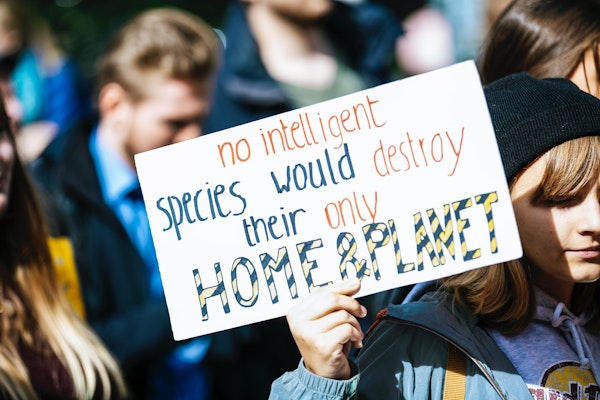
Global Survey Outlines Huge Rise In ’People’ Risk
What are the top risks for businesses to focus on mitigating during 2020? Risks such as climate/environmental, and cyber, quickly spring to mind. However, it seems one other type of risk has leapt forward in the rankings.
July 1, 2020
Risk Management

5 Transformations For A Post-Pandemic World
There’s been a lot of talk about how the coronavirus pandemic may permanently affect aspects of daily life and fundamentally alter entire industries. The future of the insurance industry deserves particular attention, considering its critical ability to help businesses weather times of extreme hardship and uncertainty.
June 25, 2020
Risk Management
Technology

Allstate Reportedly Preparing To Downsize, Thousands Of Employees Likely Affected
With Allstate Corporation remaining tight-lipped over a possible mass layoff, details have emerged from an anonymous tipster suggesting that more than 3,000 employees could be out of a job soon.
June 25, 2020
Risk Management

Insurance Implications Of Electric Cars
Around the globe, the take-up of electric cars is expected to accelerate rapidly in future, driven by consumer demand and government policies aimed at tackling climate change.
June 15, 2020
Liability
Risk Management

4 Stages To Recovery And ‘Future Of Work’
The insurance industry is experiencing seismic shifts in day-to-day operations stemming from this invisible yet intensely disruptive contagion COVID-19, but early signs of longer-term trends are also starting to emerge. A few short weeks ago, who would have thought that human health/safety and operational resilience would become the top two drivers of digital transformation?
June 12, 2020
Risk Management
Technology

Pandemic Risk Expert Examines Longer-Term Impacts Of COVID-19
In times of crisis, human nature dictates that we focus on the present with microscopic vision. As COVID-19 wreaks havoc worldwide, businesses have entered survival mode.
June 8, 2020
Risk Management

Insurance Companies Are Subsidizing Coronavirus And Climate Misinformation
Insurance companies have issued some of the loudest calls for climate action, and they rely on hard data to make their assessments. But a new report from Media Matters for America finds that major insurers are top sponsors of Fox News’ coverage of highly misleading pandemic coverage, using tactics it honed through years of climate denial.
May 29, 2020
Education & Training
Risk Management
Weird

GMOs: A Primer (Of Sorts)
My purpose today is to add some clarity and remind readers that, when it comes to most of the insurance products we sell, there is little, if any, insurance coverage response. But first, let’s take a look at what a GMO is, how long they have been around, and what they mean for agriculture and the food on your table.
May 28, 2020
Education & Training
Excess & Surplus Lines
Liability
Risk Management

Go Ahead, Monitor Your Remote Workers; But You’d Better Hope HR And Risk Management Get It Right
Employee monitoring software can keep your workforce accountable and productive, but it can also reduce morale and promote distrust. Consider the risks.
May 27, 2020
Risk Management

Leading Remote Workers In Insurance
Over the past two months, millions of workers in the United States have re-arranged to work remotely. It’s not a totally alien concept. Before the coronavirus pandemic, approximately over two-thirds of US businesses provided some form of remote work opportunity (at least occasionally) for their employees.
May 20, 2020
Risk Management
Technology

‘BI Coverage’ Misnomer Puts The P&C Industry Behind The 8-Ball
The insurance industry set itself up for a public relations disaster when it comes to business interruption claims, and it should be prepared to be called out more often on the name given to the coverage, says one risk researcher.
May 19, 2020
Catastrophe
Risk Management

Musings Of A Socially Distanced Professor: New Habits
Here I sit at my house. Thanks to COVID-19, my town is pretty much locked down. Most places are closed, including the campus where I work. I am working from home for the rest of the semester. That doesn’t really bother me.
May 12, 2020
Risk Management

Are We Ready For A Technology Catastrophe?
When encountering the term “catastrophic risk”, most people will think about extreme weather, climate change, earthquakes, and other related concepts involving nature. However, Marsh’s Technology Industry Risk Study 2020 has highlighted a widely underestimated risk that could potentially lead to catastrophic results: the failure of technology to perform.
May 11, 2020
Catastrophe
Risk Management
Technology

The Show Must Go On: Claims And Litigation In A World Dominated By COVID-19
In case you weren’t aware, there’s a pandemic currently sweeping our nation, and the convulsions caused by COVID-19’s impact on our personal lives have only been rivaled by those felt in our professional ones.
May 8, 2020
Catastrophe
Litigation
Risk Management
Technology

Push For Pandemic Risk Insurance Program Gathers Steam
As the COVID-19 pandemic continues to unfold and wreak unprecedented havoc on global economies, the idea of a federal pandemic risk insurance program in the US has been put forward, with several sectors voicing their approval.
May 5, 2020
Legislation & Regulation
Risk Management





